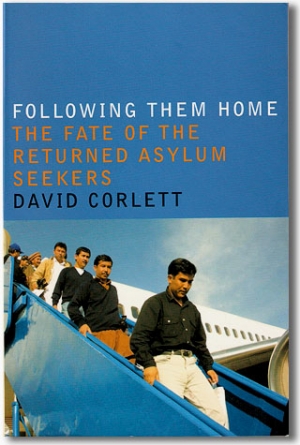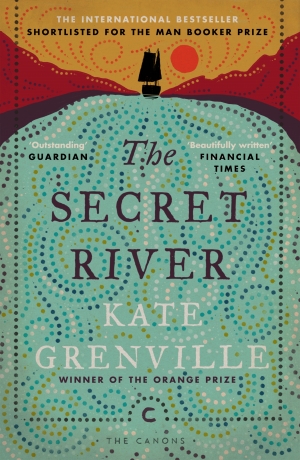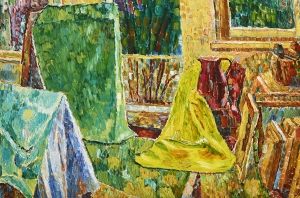Archive
Peter Mares reviews ‘Following Them Home: The fate of the returned asylum seekers’ by David Corlett
The federal government maintains that it has no obligation to monitor the fate of non-citizens removed from Australia’s shores. In fact, it argues that it is better not to monitor returnees, since surveillance by a Western government might put them at greater risk. In certain circumstances this may be true: in a theocracy such as Iran, for example, where the very act of leaving renders a citizen suspect. In the main, however, the government’s argument is self-serving. The fate of Australian citizen Vivian Alvarez Solon, left to decline slowly in a Philippines hospice, shines a more revealing light on policy. It shows that Australian authorities have cultivated a determined indifference to the fate of deportees on the basis that ignorance is bliss. No care, no responsibility.
... (read more)Richard Johnstone reviews ‘Aussiewood: Australia’s leading actors and directors tell how they conquered Hollywood’ by Michaela Boland and Michael Bodey and ‘Trade Secrets: Australian actors and their craft’ by Terence Crawford
Judi Farr – one of the fourteen interviewees who appear in Terence Crawford’s Trade Secrets: Australian Actors and Their Craft – reflects on the unpredictable nature of performance, and on the way in which an actor can become so immersed in a role and so apparently truthful to the emotion of the moment that, contrary to what we might expect, the connection with the audience is broken rather than reinforced. ‘Sometimes,’ she says, ‘you can do a play where tears will be pouring down your face, but you haven’t really affected anyone.’ Wendy Hughes makes a similar point: she recalls having to cry for a scene in a Paul Cox film, and how she prepared herself by getting deeply into the mood beforehand. During the first take, the tears flowed, and everything ‘felt so real’. Then she went through the scene again, but this time she ‘didn’t feel it the same and didn’t cry as much’. When the takes were compared afterwards, Hughes was struck by the fact that the one in which it all felt ‘really real’ was not the best. ‘The other one where I was in control was better.’
... (read more)Tamas Pataki reviews ‘Blush: Faces of shame’ by Elspeth Probyn
In the last couple of decades, the disciplines of philosophy, psychology and neuroscience (and perhaps others, such as law) have witnessed intensified interest in the emotions. In cognitive psychology and neuroscience, several developments, especially advances in computational modelling and new brain-imaging techniques, brought early successes in understanding important aspects of perceptual and cognitive processes. Partly because it became clear that these processes were not as independent of the affective, volitional and appetitive faculties as the classical division of mind suggested, it wasn’t long before scientific researchers turned to the emotions (and the other peskier faculties). Most readers will be familiar with some of the recent popular works on emotion by distinguished neuroscientists such as Antonio Damasio and J. LeDoux.
... (read more)The Grave at Thu Le explores a young French woman’s visit to Vietnam to research her ancestry, and to locate the cemetery in which members of her family were interred. Catherine D’anyers’s great-great-grandfather Claude was an engineer who lived in the colonial community in Hanoi at the turn of the last century. Past and present strands of the novel interweave as old, childhood stories of yester-year are overlaid with contemporary realities of Vietnam.
... (read more)ABR welcomes letters from our readers. Correspondents should note that letters may be edited. Letters and emails must reach us by the middle of the current month, and must include a telephone number for verification.
... (read more)Sarah Kanowski reviews 'The Singing' by Stephanie Bishop and 'The Patron Saint Of Eels' by Gregory Day
The Singing is the inaugural publication in the Varuna Firsts series, a collaboration between the Varuna Writers’ House and Brandl & Schlesinger. Both should be applauded for bringing a distinctive new voice into Australian writing; not to mention the honour due to the prodigious talent of Stephanie Bishop herself. Bishop has written a haunting novel with a seemingly simple story: love gone awry. A woman runs into an ex-lover on the street (neither protagonist is named), and this meeting throws her back into the story of their past. The two narratives – her solitary life now and the tale, mainly, of the relationship’s end – run in parallel. The novel’s energy, however, is ruminative rather than linear, circling around the nature of their love, pressing at the bruises left by its collapse.
... (read more)Kerryn Goldsworthy reviews 'The Secret River' by Kate Grenville
Kate Grenville is a brave woman. For some years now, the representation of Aboriginal people by white writers has been hedged about by a thicket of postcolonial anxieties, profoundly problematic and important but too often manifested as hostile, holier-than-thou critique, indulging, at its most inept ..
... (read more)The traits women are encouraged to develop nowadays, such as outwardness, attitude, assertiveness, and professionalism, did not characterise Grace Cossington Smith (1892–1984). Family snapshots showed the young woman with tousled hair, guileless face, and buck-toothed smile: a neat-figured, long-skirted Edwardian tomboy after the style of Australian heroines in novels by Ethel Turner and Mary Grant Bruce. The older woman in family photographs still had the tomboy grin; conversely, when she showed a public face, the mouth was closed and the eyes steady behind glasses.
... (read more)Unlike Flaubert, the ‘hermit of Croisset’, who turned away from his age in an attitude of ironic detachment, Émile Zola (1840–1902) embraced his century in a way no French writer had done since Balzac. Zola’s ambition was to emulate Balzac by writing a comprehensive history of contemporary society. Through the fortunes of his Rougon-Macquart family, he examined methodically the social, sexual, and moral landscape of the late nineteenth century along with its political, financial, and artistic contexts. Zola is the quintessential novelist of modernity, understood in terms of an overwhelming sense of tumultuous change.
... (read more)The scope of this novel could hardly be more ambitious. It ranges from the landing ten thousand years ago of prehistoric men in primitive rafts on the shores of what would one day be known as the Kimberley, to the apparition of a young asylum seeker off a leaky, sinking boat in roughly the same locality during the present inhospitable times. In other words, it meets the challenge of major issues both immemorial and contemporary.
... (read more)








